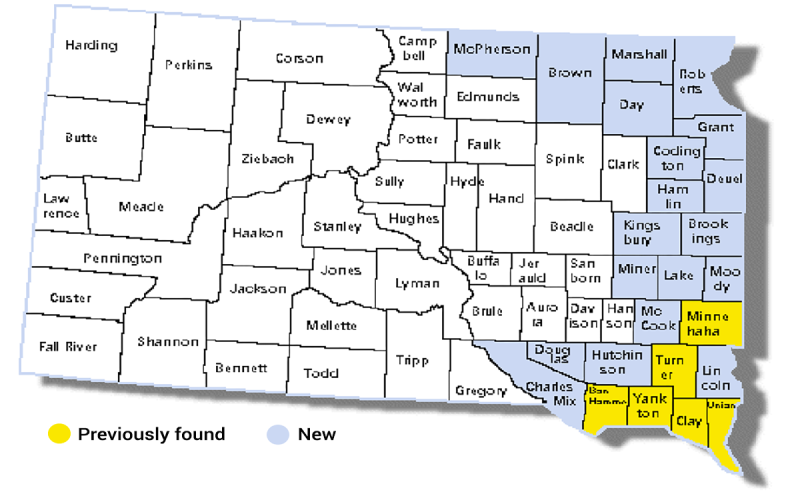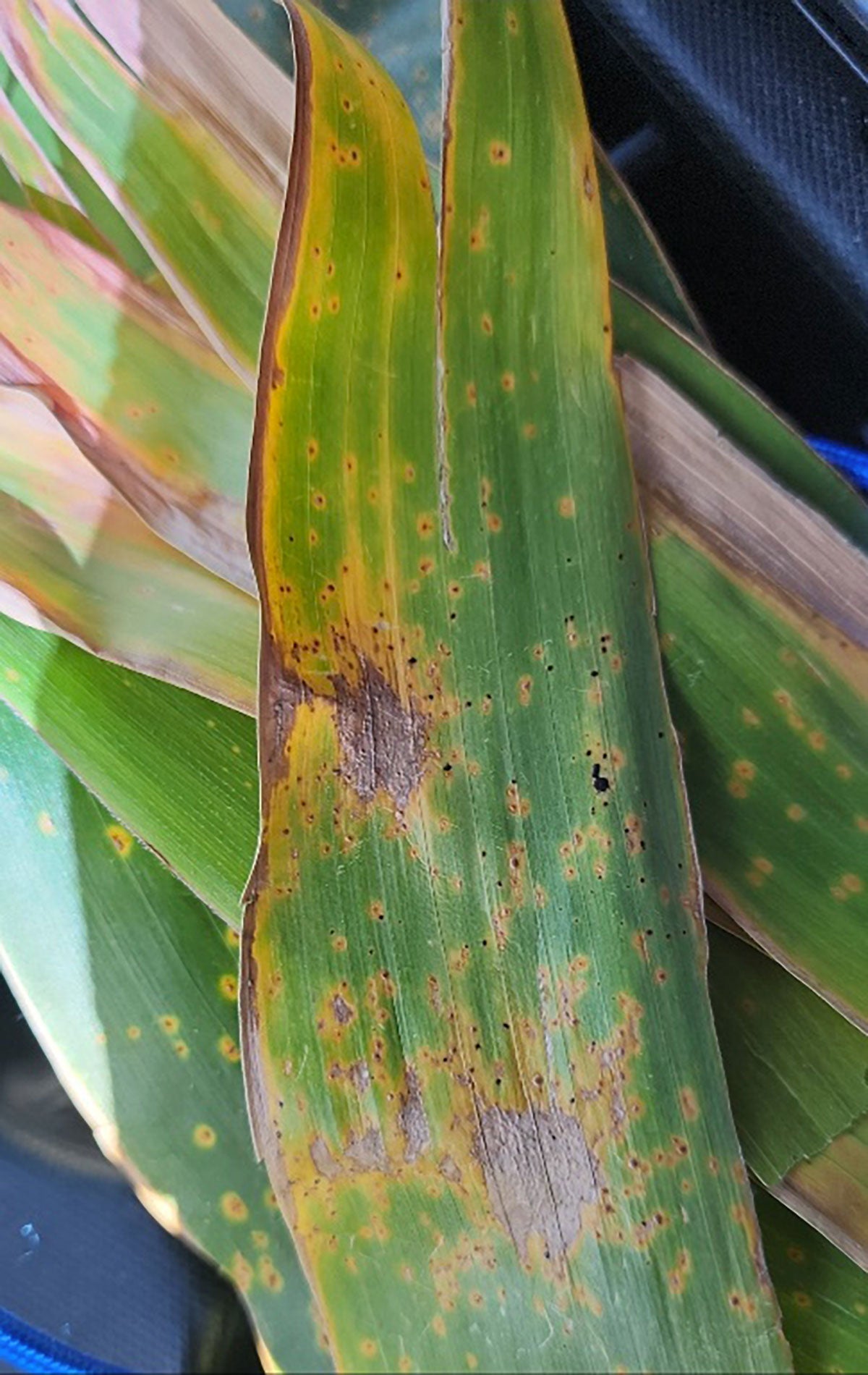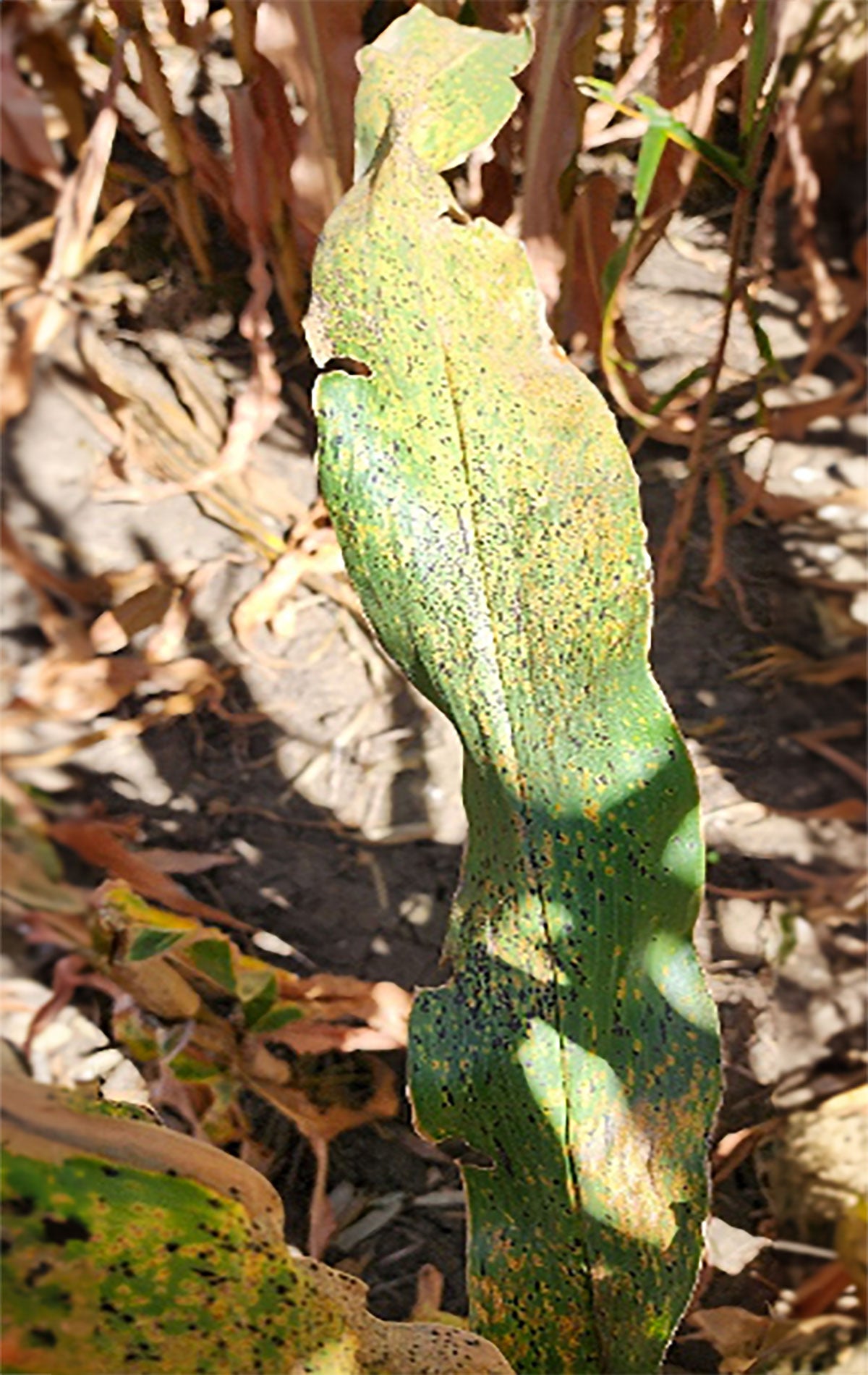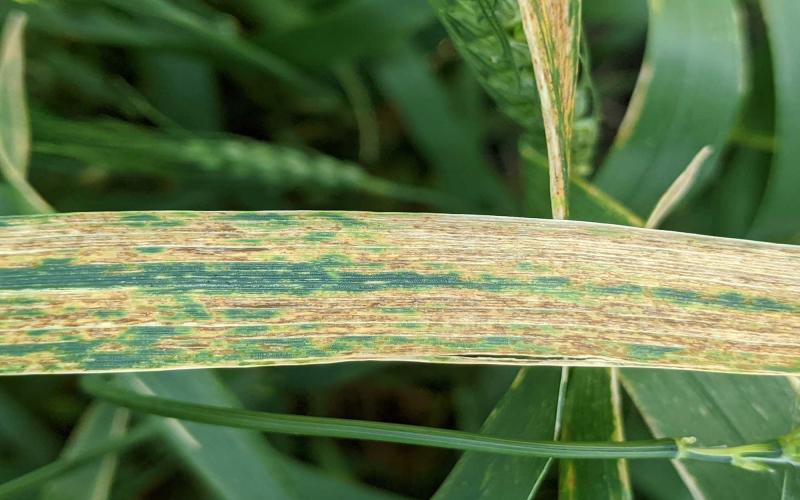Written collaboratively by Ciera Kotaska, Madalyn Shires, and Connie Strunk.
Recent Tar Sport Cases

As of 3:00 p.m. CDT on September 26, 2024, we have confirmed the presence of tar spot in 25 counties across the eastern half of South Dakota (Figure 1). The severity of infection has varied anywhere from less than 1% to approximately 20% on individual plants. On average, most fields are under 10% severity, but some fields have hot spots with up to 20% in small areas.
Counties north of Highway 34 are typically seeing infection severity of less than 5%. Positive counties south of Highway 34 are seeing anywhere from 1% to 20%, especially in Yankton, Clay, and Union counties, which have developed tar spot in both 2022 and 2023.
Scouting
When scouting for Tar Spot, you should be looking for black, circular to diamond-shaped lesions, which may vary in size, the smallest typically being about the size of a pen tip (Figure 2 and Figure 3). The lesion should be seen on both sides of the leaf, which will help to distinguish tar spot from insect frass and darker rust spores.
Tar Spot Lesions

Heavy Infection

Management
This late in the year, fungicides are not recommended, but residue management should be heavily considered if your severity level is over 10% in any area of your field.
If you suspect that you have found tar spot, please reach out to Madalyn Shires, Extension Plant Pathology Specialist.


